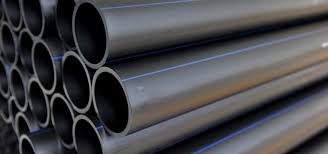Dec . 19, 2024 06:40 Back to list
pvc to hdpe connection product
The Connection between PVC and HDPE A Guide to Products and Applications
In the ever-evolving world of plumbing and construction, the choice of materials plays a crucial role in the durability, safety, and efficiency of various systems. Two widely used materials in this spectrum are Polyvinyl Chloride (PVC) and High-Density Polyethylene (HDPE). Each has its unique properties, benefits, and applications, but there are cases when it becomes necessary to connect these two different types of piping systems. This article explores the connection between PVC and HDPE, focusing on the products available for seamless integration and the advantages they offer.
Understanding PVC and HDPE
Before diving into connection products, it is essential to understand the differences between PVC and HDPE. PVC is a rigid plastic commonly used in pipes for water supply, drainage, and electrical conduits. It is known for its excellent chemical resistance, low cost, and ease of installation. However, its rigidity can limit its applications in environments that require more flexibility.
On the other hand, HDPE is a more flexible thermoplastic known for its high strength-to-density ratio. It is often used in applications ranging from water and gas distribution to industrial piping systems. HDPE pipes are more resistant to impact and can better withstand temperature changes, making them suitable for underground installations and areas with heavy traffic.
The Need for Connection Products
In many situations, construction projects may require the use of both PVC and HDPE pipes. This can occur in municipal water systems, irrigation setups, or residential plumbing where different materials are preferred for specific sections of the pipeline. Because the joining of these two materials isn't straightforward due to their differing properties, specialized connection products are necessary to ensure a secure and leak-free bond.
Connection Products
pvc to hdpe connection product

1. Mechanical Couplings One of the most common methods of connecting PVC and HDPE pipes is through mechanical couplings. These couplings are designed to accommodate the variations in pipe diameters and materials. Mechanical couplings often include rubber gaskets and metal bands, providing a tensioned seal that is strong enough to hold up under pressure while allowing for slight movement in the pipes.
2. Transitions Fittings Transition fittings are specifically designed for connecting two different types of pipes. For instance, a PVC-to-HDPE transition fitting may use an FIP (Female Iron Pipe) thread on one side and a spigot connection on the other. These fittings provide a secure joint that accommodates the different coefficients of thermal expansion in both materials.
3. Adhesive Solutions In some instances, specialized adhesives can be used to bond PVC and HDPE. However, this method requires precise surface preparation and should be executed with care, as the effectiveness of the bond depends on various factors, including the environmental conditions. It's also crucial to ensure that the adhesive is compatible with both materials.
4. Heat Fusion While HDPE pipes are often joined through heat fusion methods, it is not typically applicable for connecting HDPE to PVC. However, if a section of the pipeline is entirely HDPE, using heat fusion for those connections can create a strong, long-lasting joint.
Advantages of Proper Connections
Utilizing the correct connection products between PVC and HDPE not only ensures the structural integrity of the piping system but also maximizes the advantages of both materials. Properly connected systems can enhance the overall performance and longevity of plumbing installations, reducing maintenance costs and preventing leaks. Moreover, combining the distinct benefits of PVC’s corrosion resistance with HDPE’s flexibility can lead to optimized solutions for various applications.
Conclusion
In conclusion, the connection between PVC and HDPE is essential for creating efficient and durable piping systems. By understanding the properties of each material and the connection products available, contractors and builders can make informed decisions that enhance the performance and reliability of their projects. Whether it's through mechanical couplings, transition fittings, or adhesive solutions, maintaining a robust and effective connection between these two materials ensures that modern plumbing and construction thrive in their respective applications.
-
High-Quality PVC Borehole Pipes Durable & Versatile Pipe Solutions
NewsJul.08,2025
-
High-Quality PVC Perforated Pipes for Efficient Drainage Leading Manufacturers & Factories
NewsJul.08,2025
-
High-Quality PVC Borehole Pipes Durable Pipe Solutions by Leading Manufacturer
NewsJul.08,2025
-
High-Quality PVC Borehole Pipes Reliable PVC Pipe Manufacturer Solutions
NewsJul.07,2025
-
High-Quality UPVC Drain Pipes Durable HDPE & Drain Pipe Solutions
NewsJul.07,2025
-
High-Quality Conduit Pipes & HDPE Conduit Fittings Manufacturer Reliable Factory Supply
NewsJul.06,2025

